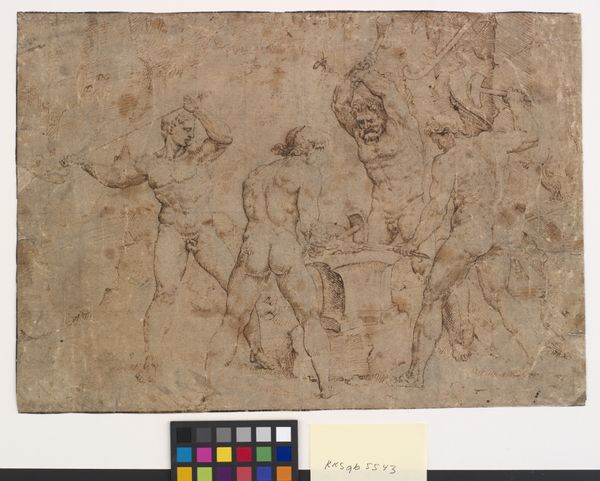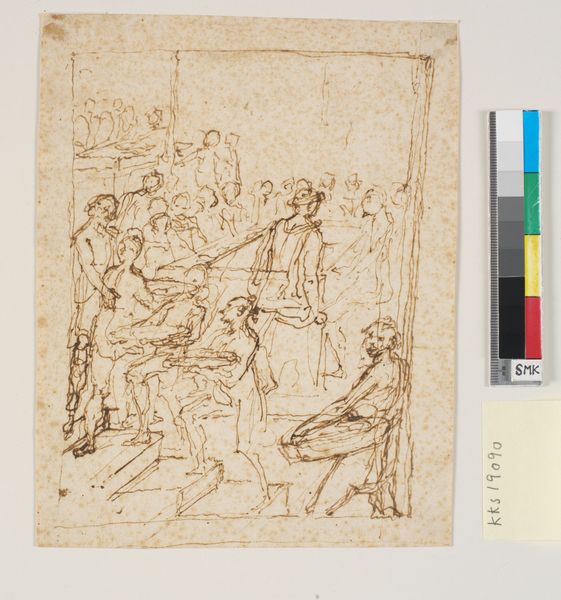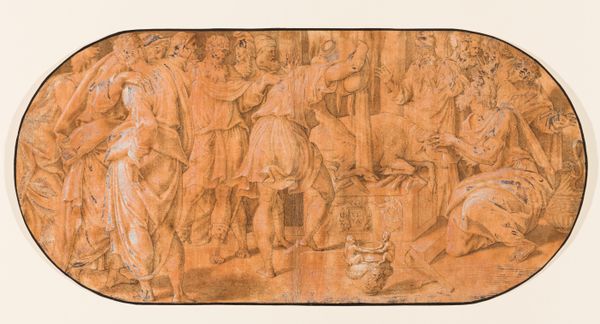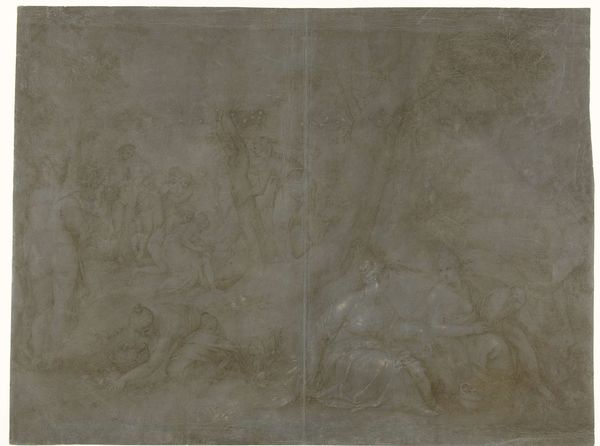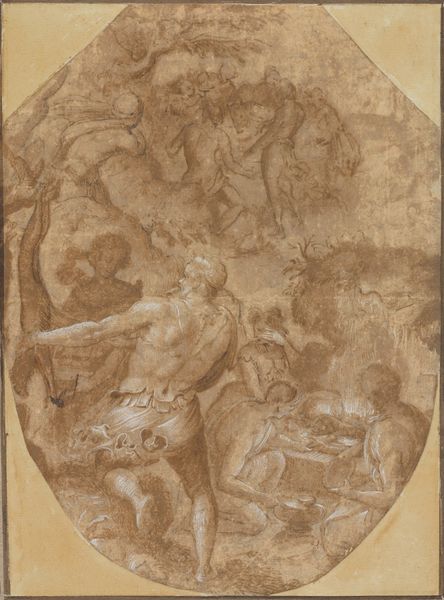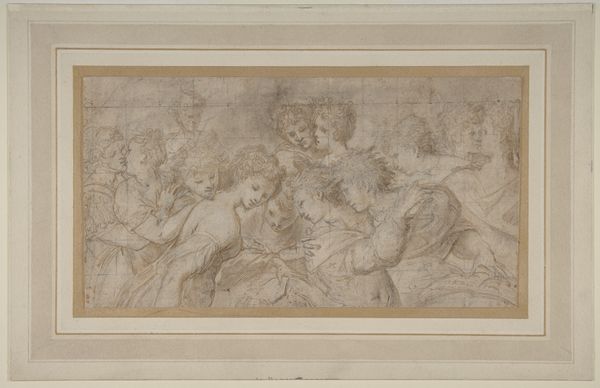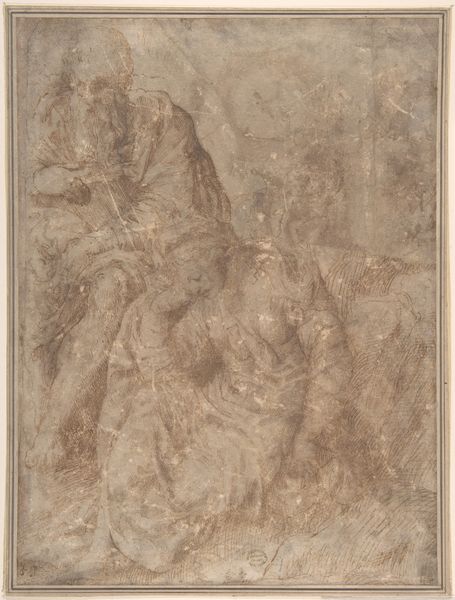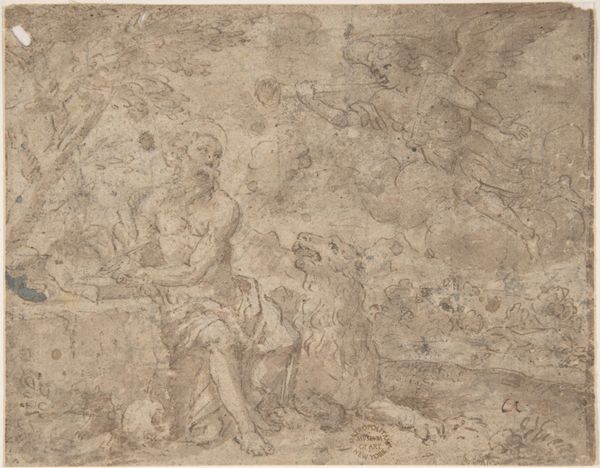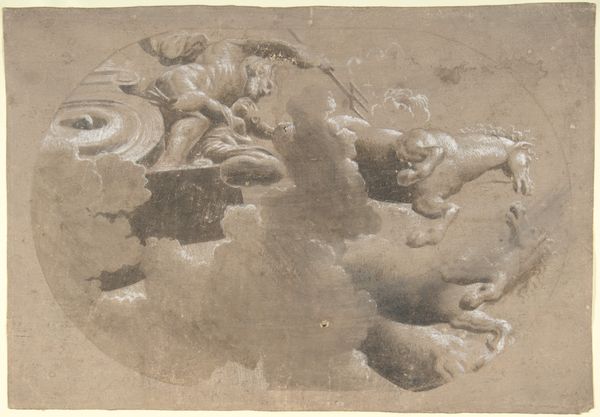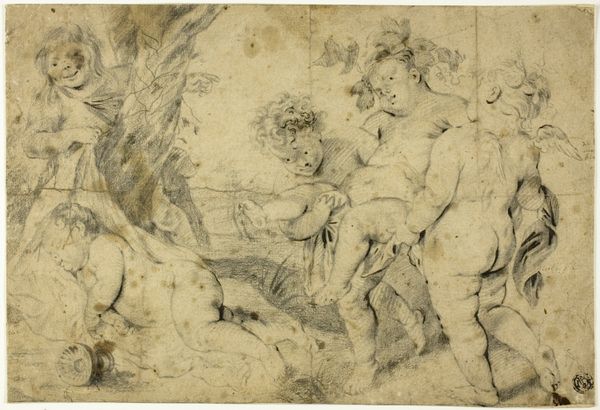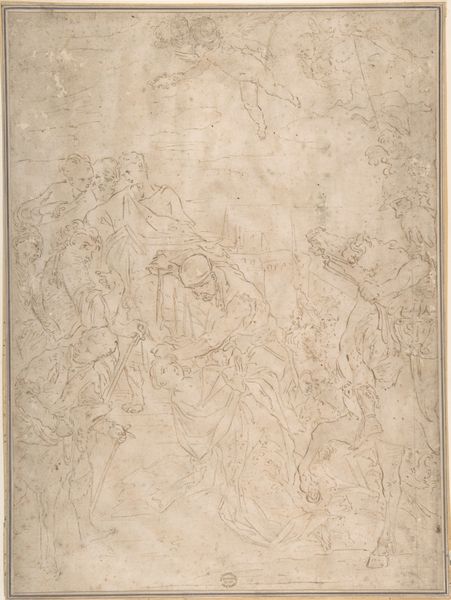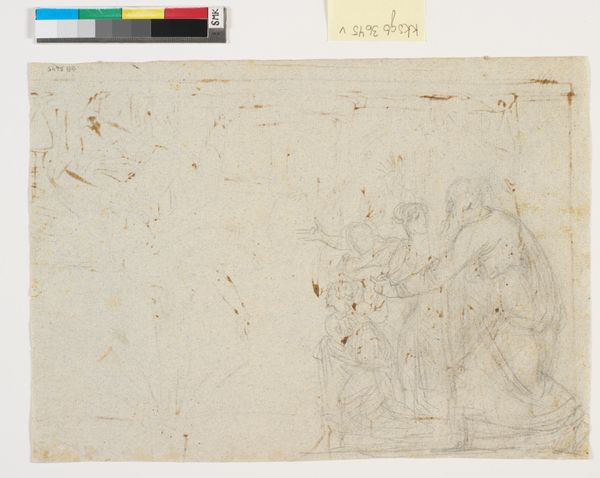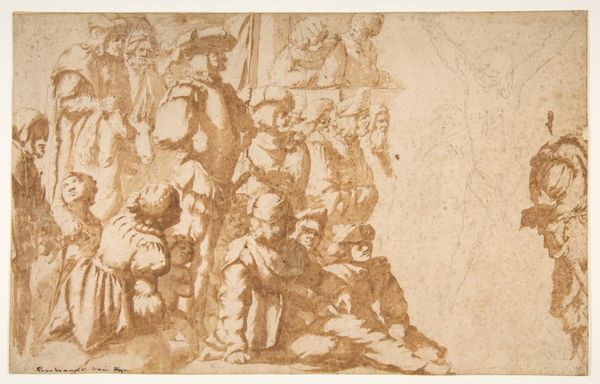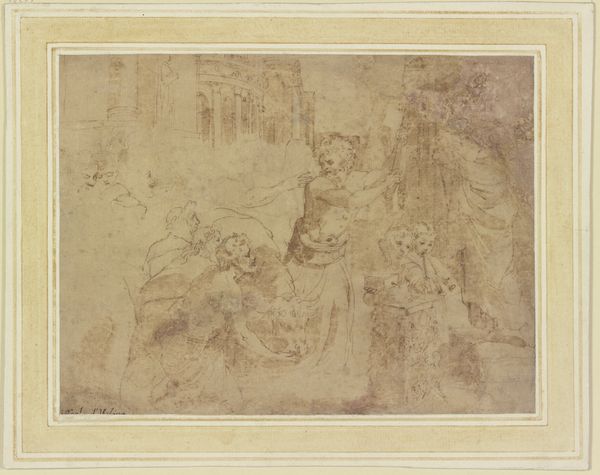
drawing
#
drawing
#
figuration
#
11_renaissance
#
history-painting
#
italian-renaissance
Dimensions: 318 mm (height) x 351 mm (width) (bladmaal)
Editor: This drawing, "The Adoration of the Shepherds," is from the 16th century, by an anonymous artist. It’s currently held at the SMK in Copenhagen. The use of the sepia ink really creates an intimate and humble tone. What strikes you most when you look at it? Curator: As a historian, I'm immediately drawn to the narrative choices and how they reflect the socio-political landscape of the 16th century. The subject itself, the Adoration of the Shepherds, gained significant popularity during the Renaissance, partially because it offered a point of connection between the divine and the everyday person. But, why this subject? What was the patron hoping to convey through this particular depiction? Editor: That's a fascinating point. It makes me wonder about the intended audience for a piece like this. Was it meant for private devotion, or perhaps something more public? Curator: Exactly. The medium, drawing, suggests perhaps a preparatory study for a larger work. Understanding the institutional context helps us appreciate the drawing. The artist's decision-making was driven by various external factors, be it patronage, religious sentiment, or perhaps the intention of it being replicated and disseminated in print form. Editor: So, the drawing’s artistic value isn't just in its aesthetic appeal but also in what it tells us about the society that produced it? Curator: Precisely! Its value resides within the web of its historical circumstances. By examining those circumstances we get a much fuller picture of its significance and place within society. Editor: I never considered all of that! It's made me look at art with fresh eyes. Curator: That's the beauty of art history. There's always another layer to uncover!
Comments
No comments
Be the first to comment and join the conversation on the ultimate creative platform.
